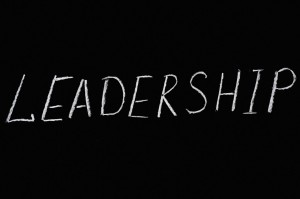
 Become a PowerPoint Guru by Dave Tracy
Become a PowerPoint Guru by Dave Tracy
Learn the methodologies, frameworks, and tricks used by Management Consultants to create executive presentations in the business world.

 Become a PowerPoint Guru by Dave Tracy
Become a PowerPoint Guru by Dave Tracy
Editor’s Note: If you are interested in becoming an expert on Strategy Development, take a look at Flevy’s Strategy Development Frameworks offering here. This is a curated collection of best practice frameworks based on the thought leadership of leading consulting firms, academics, and recognized subject matter experts. By learning and applying these concepts, you can stay ahead of the curve. Full details here.
What makes companies great in their industries is sustained above-average Growth.
Conventional approach to Organic Growth has business leaders extending their existing product lines and brands, as well as entering new geographic regions. This conventional Growth Strategy at some point in time starts failing to provide the results required to hold market leadership positions.
Focus-driven Growth is an approach that provides results regardless of the economic environment. The approach demands that the leadership team keep a methodical approach that covers the entirety of the business cycle i.e., from Strategic Planning and Strategic Vision to Strategy Execution and Performance Management.
Outwardly mature businesses can be reinvigorated by making a small number of—but larger—bets and by concentrating unremittingly on implementing a straightforward but forceful vision.
This approach has been successfully tested and has proven its mettle in at least 3 well-known companies, on 3 continents, over a span of 10 years.
Focus-driven Growth demands that the organization progress sequentially through a set of 7 steps.
When taken collectively in the right order, these steps embody a formidable prescription for generating profitable Growth.
Let us delve a little deeper into some of the steps.
Every organization has segments of Growth areas. This step entails discovering those areas for further processing. Leadership of the organization should gather in a series of workshops and identify which areas of the business are performing far better than the others. Identified segments become the focus areas of Growth because it is easier to refine and enlarge the successful areas rather than remedy what is not working.
Focus areas discovered in the 1st step need to be grouped and prioritized in order to delineate the focused bets that the company ought to make. Focus areas may be categories, brands, geographies, platforms, that are doing well.
A single page preliminary strategy roadmap giving priority for each area results from the above process.
Outcomes of Step 2 have to be summarized into a forceful yet uncomplicated Vision which serves to align efforts behind a clearly grasped goal.
Interested in learning more about Focus-driven Growth? You can download an editable PowerPoint on Focus-driven Growth here on the Flevy documents marketplace.
Gain the knowledge and develop the expertise to become an expert in Strategy Development. Our frameworks are based on the thought leadership of leading consulting firms, academics, and recognized subject matter experts. Click here for full details.
“Strategy without Tactics is the slowest route to victory. Tactics without Strategy is the noise before defeat.” – Sun Tzu
For effective Strategy Development and Strategic Planning, we must master both Strategy and Tactics. Our frameworks cover all phases of Strategy, from Strategy Design and Formulation to Strategy Deployment and Execution; as well as all levels of Strategy, from Corporate Strategy to Business Strategy to “Tactical” Strategy. Many of these methodologies are authored by global strategy consulting firms and have been successfully implemented at their Fortune 100 client organizations.
These frameworks include Porter’s Five Forces, BCG Growth-Share Matrix, Greiner’s Growth Model, Capabilities-driven Strategy (CDS), Business Model Innovation (BMI), Value Chain Analysis (VCA), Endgame Niche Strategies, Value Patterns, Integrated Strategy Model for Value Creation, Scenario Planning, to name a few.
Learn about our Strategy Development Best Practice Frameworks here.
You can download in-depth presentations on this and hundreds of similar business frameworks from the FlevyPro Library. FlevyPro is trusted and utilized by 1000s of management consultants and corporate executives. Here’s what some have to say:
“My FlevyPro subscription provides me with the most popular frameworks and decks in demand in today’s market. They not only augment my existing consulting and coaching offerings and delivery, but also keep me abreast of the latest trends, inspire new products and service offerings for my practice, and educate me in a fraction of the time and money of other solutions. I strongly recommend FlevyPro to any consultant serious about success.”
– Bill Branson, Founder at Strategic Business Architects
“As a niche strategic consulting firm, Flevy and FlevyPro frameworks and documents are an on-going reference to help us structure our findings and recommendations to our clients as well as improve their clarity, strength, and visual power. For us, it is an invaluable resource to increase our impact and value.”
– David Coloma, Consulting Area Manager at Cynertia Consulting
“FlevyPro has been a brilliant resource for me, as an independent growth consultant, to access a vast knowledge bank of presentations to support my work with clients. In terms of RoI, the value I received from the very first presentation I downloaded paid for my subscription many times over! The quality of the decks available allows me to punch way above my weight – it’s like having the resources of a Big 4 consultancy at your fingertips at a microscopic fraction of the overhead.”
– Roderick Cameron, Founding Partner at SGFE Ltd
 Evaluation and onboarding of outstanding leaders is anything but straightforward. Almost all organizations have set up testing mechanisms or assessment centers to distinguish senior leadership candidates having traits that make up for Exceptional Leaders. These assessment centers shortlist leaders based on certain indicators and criteria.
Evaluation and onboarding of outstanding leaders is anything but straightforward. Almost all organizations have set up testing mechanisms or assessment centers to distinguish senior leadership candidates having traits that make up for Exceptional Leaders. These assessment centers shortlist leaders based on certain indicators and criteria.
However, these assessments are not always accurate in predicting the best leaders. At times, the entire evaluation exercise results in drafting mediocre leaders and fails to select top influencers and role models for the organization. The traditional methods of gauging senior leaders prove inadequate based, typically, on 3 common flaws:
Research by PwC—spanning over a period of 10 years with a sample size of 2500 senior executives, who remained a part of C-suite successions in large organizations—reveals that the common flaws in leadership assessment methods can be confronted methodically. To find the best C-level executives, leadership evaluations should focus on identifying candidates possessing the following 4 key traits that are typical only of the top C-level executives:
Let’s dive deeper into these traits.
In today’s world of disruption, organizations face new challenges on a day-to-day basis. Exceptional leaders have the ability to process tremendous volumes of information and simplify things fairly easily. Leaders who truly standout are well-versed in tackling confusion and learn promptly. They are great at:
People in an organization often operate in groups. These groups consider people outside their circle as competitors or “outsiders.” This tribal mentality is detrimental for an organization and inculcates individual thinking—focusing only on personal / group targets—and debilitates the ability to operate outside one’s comfort zone. Exceptional leaders have the skills to:
Nobody can undermine or deny the importance of teamwork. Much has been written on the subject. However, in reality, most teams do not quite understand the spirit and commitment fundamental to develop teamwork.
Exceptional leaders:
Interested in learning more about the traits of outstanding leaders? You can download an editable PowerPoint on Exceptional Leadership here on the Flevy documents marketplace.
You can download in-depth presentations on this and hundreds of similar business frameworks from the FlevyPro Library. FlevyPro is trusted and utilized by 1000s of management consultants and corporate executives. Here’s what some have to say:
“My FlevyPro subscription provides me with the most popular frameworks and decks in demand in today’s market. They not only augment my existing consulting and coaching offerings and delivery, but also keep me abreast of the latest trends, inspire new products and service offerings for my practice, and educate me in a fraction of the time and money of other solutions. I strongly recommend FlevyPro to any consultant serious about success.”
– Bill Branson, Founder at Strategic Business Architects
“As a niche strategic consulting firm, Flevy and FlevyPro frameworks and documents are an on-going reference to help us structure our findings and recommendations to our clients as well as improve their clarity, strength, and visual power. For us, it is an invaluable resource to increase our impact and value.”
– David Coloma, Consulting Area Manager at Cynertia Consulting
“FlevyPro has been a brilliant resource for me, as an independent growth consultant, to access a vast knowledge bank of presentations to support my work with clients. In terms of RoI, the value I received from the very first presentation I downloaded paid for my subscription many times over! The quality of the decks available allows me to punch way above my weight – it’s like having the resources of a Big 4 consultancy at your fingertips at a microscopic fraction of the overhead.”
– Roderick Cameron, Founding Partner at SGFE Ltd
 Most organizations aren’t ready to deliver great Customer Experiences across all channels. Many of them have invested heavily in conventional methods of doing business, backed by in person or over-the-phone customer experience. This has led to creation of siloed operational structures within companies, where each silo operates individually.
Most organizations aren’t ready to deliver great Customer Experiences across all channels. Many of them have invested heavily in conventional methods of doing business, backed by in person or over-the-phone customer experience. This has led to creation of siloed operational structures within companies, where each silo operates individually.
With the advent of digital channels, these organizations set out to use and proffer their services via digital channels. They did this by creating discrete digital-product groups in their existing operational infrastructure. However, their siloed infrastructure falls short of meeting customers’ requirements in terms of seamless communication and interaction across all channels. The reason being:
This necessitates the businesses to not only provide great Customer Experiences at each channel, but also make the transitions across these channels simple to improve the overall Customer Experience (CX). However, improving the overall Customer Experience isn’t that simple a feat, especially with silo-based operational infrastructures. Providing consistent amazing Customer Experience warrants:
Most organizations understand the significance of Transforming their Customer Experience—however, they lack the direction and support required to realize this goal. Organizational leadership can make use of the Customer Experience Pyramid to guide their CX Transformation.
The Customer Experience Pyramid is an empirical research based framework, which is quite effective in not only improving individual touchpoints but streamlining the entire Customer Journeys. The CX Pyramid entails 2 core dimensions:
The 4 Focus Areas crucial in a business to change in order to deliver top-quality Digital Customer Experiences at scale are:
Let’s discuss the first 2 individual Focus Areas of the CX Pyramid in detail for now.
Redirecting focus on making Customer Experience a part of the Organizational DNA necessitates creating a Vision statement and Strategy to depict, clarify, and plan out the purpose and objectives of serving the customers. The senior leadership needs to come up with a short and crisp Vision statement. The Vision sets out the foundation that reflects the leadership’s focus, importance the organization gives to Customer Experience, and the high-level objectives associated with the provision of quality Customer Experiences.
Next, the leadership should work on developing strategies to build fundamental competencies within the 4 CX Building Blocks—i.e., CX operations, metrics, CX-centric culture, systems and governance protocols.
Once the Vision statement has been agreed upon, it’s time to work towards carrying out the required actions to produce customer-centric outcomes. The first step in that direction involves linking all employees who work in discrete silos (in conventional structures). To align all employees, there is a need to create a Transformation team and define new roles / CX groups. The Transformation team should train and direct teams responsible for the different stages of the Customer Journey, instill new ideas, and foster desired behaviors in them.
Senior Leadership need to also assign a CX Team to run the CX program. The CX Team has to lay out processes and yardsticks to foster cross-functional collaboration and coach functional units to adopt customer-centric design practices in their operations.
Interested in learning more about the other focus areas of the CX Pyramid Framework? You can download an editable PowerPoint presentation on Customer Experience Pyramid here on the Flevy documents marketplace.
You can download in-depth presentations on this and hundreds of similar business frameworks from the FlevyPro Library. FlevyPro is trusted and utilized by 1000s of management consultants and corporate executives. Here’s what some have to say:
“My FlevyPro subscription provides me with the most popular frameworks and decks in demand in today’s market. They not only augment my existing consulting and coaching offerings and delivery, but also keep me abreast of the latest trends, inspire new products and service offerings for my practice, and educate me in a fraction of the time and money of other solutions. I strongly recommend FlevyPro to any consultant serious about success.”
– Bill Branson, Founder at Strategic Business Architects
“As a niche strategic consulting firm, Flevy and FlevyPro frameworks and documents are an on-going reference to help us structure our findings and recommendations to our clients as well as improve their clarity, strength, and visual power. For us, it is an invaluable resource to increase our impact and value.”
– David Coloma, Consulting Area Manager at Cynertia Consulting
“As a small business owner, the resource material available from FlevyPro has proven to be invaluable. The ability to search for material on demand based our project events and client requirements was great for me and proved very beneficial to my clients. Importantly, being able to easily edit and tailor the material for specific purposes helped us to make presentations, knowledge sharing, and toolkit development, which formed part of the overall program collateral. While FlevyPro contains resource material that any consultancy, project or delivery firm must have, it is an essential part of a small firm or independent consultant’s toolbox.”
– Michael Duff, Managing Director at Change Strategy (UK)
 Strategy and execution are the 2 critical elements that drive a business. However, leaders often struggle even with defining—let alone devising and executing—an effective strategy. Many of those who are responsible to deal with it fall short of describing how they typically employ it. This failure takes its roots from the fact that there is no clear path associated with strategy.
Strategy and execution are the 2 critical elements that drive a business. However, leaders often struggle even with defining—let alone devising and executing—an effective strategy. Many of those who are responsible to deal with it fall short of describing how they typically employ it. This failure takes its roots from the fact that there is no clear path associated with strategy.
Strategy is about making sound decisions about unforeseen problems. It’s about selecting the right options—about matters that are often quite ambiguous today but have great significance in the future—based on thorough contemplation, detailed analysis, and creative ideas. Broadly speaking, strategy encompasses these 3 main elements:
Great strategists execute their plans, analyze the results, evaluate their actions, and perform course correction based on the outcomes. They are not afraid of even revamping their approach entirely. Senior leaders should clarify their understanding of the concept of strategy and draw attention to the importance of differentiating between the 3 distinct types of strategies before formulating their own course of action:
Let’s delve deeper into the 3 types of strategy.
General Strategy indicates how a specific objective will be achieved, with well-thought-out plans. The focus of this type of Strategy is on ends (objectives and results) and means (the resources we have to achieve the objectives). Strategy and tactics combined bridge the gap between ends and means; where Strategy deals with deploying the resources at our disposal while tactics govern their utilization. A pattern of decisions and actions marks progress from the starting point to achievement of objectives in General Strategy.
Senior executives need to deliberate on the following questions before devising their General Strategy:
Corporate Strategy describes what a company does, the purpose of its existence, and what it aims to become. Corporate Strategy focuses on choices and commitments concerning the markets, business, and the organization. Corporate Strategy classifies the markets and the businesses in which a company will operate. This type of strategy is typically decided in the context of defining the company’s mission and vision.
A detailed assessment of the existing strategy, market, competition and environment is critical for devising the Corporate Strategy. Strategists indicate that there are critical elements that should be factored in while formulating Corporate Strategy. These elements include product or service offerings, resources, marketing and sales approaches, manufacturing capabilities / capacity, customers, distribution channels, technology, type of market and its requirements, and revenue and profit goals.
While formulating Corporate Strategy, senior executives should consider and seek answers to the following questions:
Competitive or Business Strategy specifies for an enterprise the core reason on which it contests its rivals. It depends on an organization’s competences, advantages, and disadvantages compared to the market and the rivals.
Interested in learning more about the General, Corporate, and Competitive Strategies? You can download an editable PowerPoint on The 3 Distinctions of Strategy here on the Flevy documents marketplace.
You can download this and hundreds of other consulting frameworks and consulting training guides from the FlevyPro library.
 Gordon Moore, Intel co-founder, observed that the number of transistors in a dense integrated circuit doubles about every two years. He projected that this rate of growth would continue for at least another decade.
Gordon Moore, Intel co-founder, observed that the number of transistors in a dense integrated circuit doubles about every two years. He projected that this rate of growth would continue for at least another decade.
His observation, termed the “Moore’s Law,” has correctly predicted the pace of innovation for several decades and guided strategic planning and research and development in the semiconductor industry. Moore’s law is based on observation and projection of historical trends.
In 2015, Gordon Moore foresaw that the rate of progress would reach saturation. In fact, semiconductor advancement has declined industry-wide since 2010, much lower than the pace predicted by Moore’s law. The doubling time and semi-conductor performance has changed, but it has not impacted the nature of the law much.
Although many people predict the demise of Moore’s law, exponential growth in computing power persists with the emergence of innovative technologies. Moore’s law is only part of the equation for effective Digital Transformation—there are other contributing factors including the role of leadership.
George Westerman—a senior lecturer at the MIT Sloan School of Management—proposes a new law, which states that, “Technology changes quickly, but organizations change much more slowly.” The law known as the “First Law of Digital Transformation” or “George’s Law” is a pretty straightforward observation, but is often ignored by the senior leadership. This is why Digital Transformation is considered more of a leadership—than technical—issue.
Just announcing an organization-wide Transformation program does not change the enterprise. According to George’s Law, successful Digital Transformation hinges on the abilities of senior leadership to effectively manage the so many contrasting mindsets of its workforce, identify and take care of the idiosyncrasies associated with these mindsets, interpret their desires, and focus attention on encouraging people to change.
Above all, the leadership should focus on converting Digital Transformation from a project to a critical capability. This can be done by shifting emphasis from making a limited investment to establishing a sustainable culture of Digital Innovation Factory that concentrates on 3 core elements:
Let’s now discuss the first 2 elements of the First Law of Digital Transformation.
Without a clear and compelling transformative vision, organizations cannot gather people to support the change agenda. People can be either change resisters, bystanders, or change enablers. However, most people typically tend to like maintaining the status quo, ignore change, or choose to openly or covertly engage in a battle against it.
For the employees to embrace change, leadership needs to make them understand what’s in it for them during the transition and the future organizational state. This necessitates the leaders to develop and share a compelling vision to help the people understand the rationale for change, make people visualize the positive outcomes they can achieve through Transformation, and what they can do to enable change. A compelling vision even urges the people to recommend methods to turn the vision into reality.
Problems and shortcomings in the legacy platforms is an important area to focus on during Digital Transformation. The legacy technology infrastructure, outdated systems, unorganized processes, and messy data are the main reasons for organizational lethargy. These issues hinder the availability of a unified view of the customer, implementing data analytics, and add to significant costs in the way of executing Digital Transformation.
Successful Digital Innovation necessitates the organizations to invest in streamlining the legacy systems and setting up new technology platforms that are able to enable digital and link the legacy systems. Fixing legacy platforms engenders leaner and faster business processes and helps in maintaining a steady momentum of Innovation.
Interested in learning more about the First Law of Digital Transformation? You can download an editable PowerPoint on First Law of Digital Transformation here on the Flevy documents marketplace.
You can download this and hundreds of other consulting frameworks and consulting training guides from the FlevyPro library.
Error: Twitter did not respond. Please wait a few minutes and refresh this page.